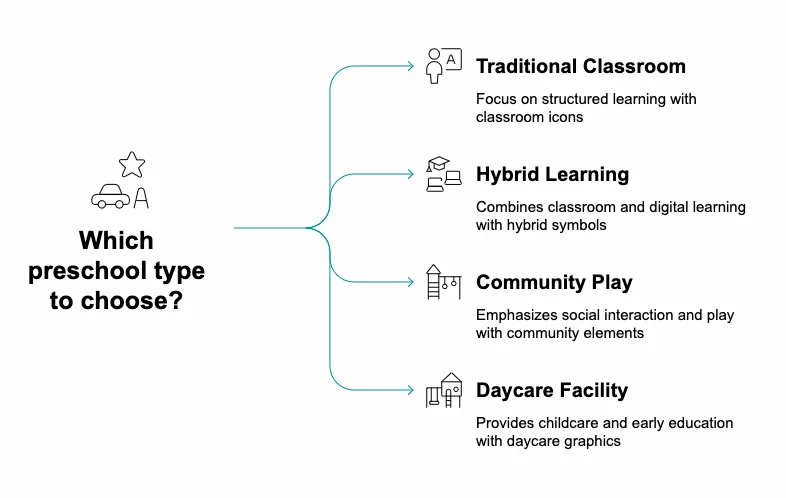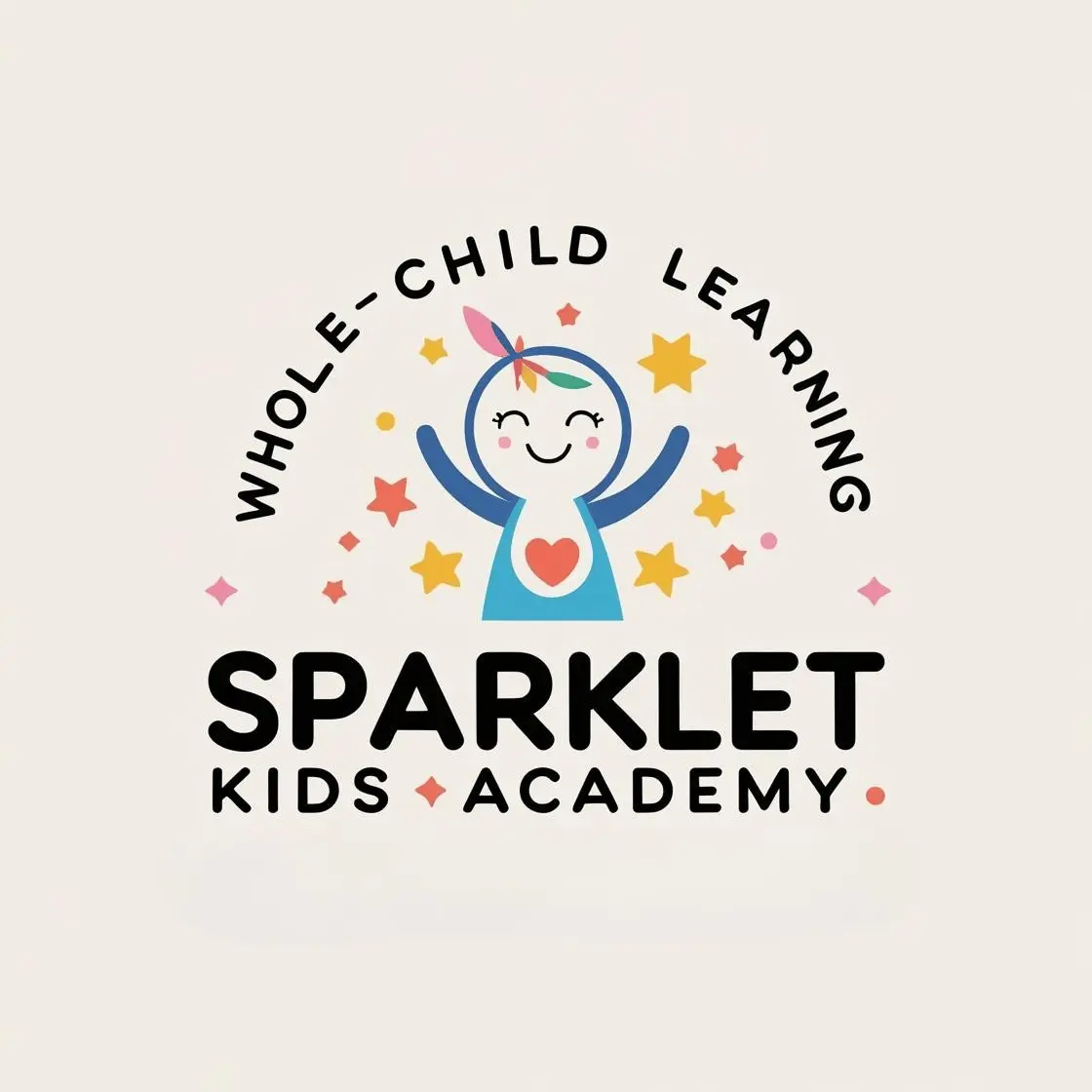
Your Slack notification pings at 3:47 PM: “Emergency release tonight—all hands on deck until 9 PM.” Meanwhile, your three-year-old needs pickup by 6:00 PM, and you’re already juggling a client call that’s running long.
Sound familiar? Welcome to Silicon Valley parenting.
If you’re researching childcare options in Santa Clara, you’ve probably noticed two terms thrown around interchangeably: daycare and preschool. But here’s what no one tells you—choosing the wrong type for your family’s specific needs, especially when you’re trying to maintain work-life balance, can create months of stress, guilt, and logistical nightmares.
After helping hundreds of working families navigate this decision, we’ve created a simple framework that cuts through the confusion and gets you to the right choice fast.
The Great Misunderstanding: Why Parents Pick Wrong
Most Santa Clara parents approach this decision backwards. They start with what sounds more “educational” or what their neighbor recommends, instead of what actually fits their family’s reality.
The result?
- Parents choose traditional preschools with rigid 9-3 schedules, then scramble for backup care during crunch times
- Or they pick basic daycare thinking it’s “just babysitting,” only to worry their child isn’t getting kindergarten prep for the top Santa Clara elementary schools.
The truth: In 2025, the line between quality daycare and preschool has blurred significantly. What matters isn’t the label—it’s finding the program that matches your family’s unique combination of schedule needs and educational goals.
The Silicon Valley Parent Decision Matrix™
Here’s your cut-to-the-chase framework for making this choice:
Ask yourself these two questions:
- Schedule Reality Check: How predictable are your work demands?
- Educational Priority Level: How important is structured learning versus flexible care?
Plot your answers, and your ideal program type becomes crystal clear.
Quadrant 1: Predictable Schedule + High Educational Priority = Traditional Preschool
- Best for: Parents with standard tech hours, strong kindergarten prep focus
- Examples: Teachers, established engineers, project managers with set schedules
Quadrant 2: Unpredictable Schedule + High Educational Priority = Comprehensive Daycare-Preschool Hybrid
- Best for: Parents in high-demand roles who won’t compromise on education
- Examples: Startup founders, consultants, sales professionals, emergency responders
Quadrant 3: Predictable Schedule + Flexible Educational Approach = Community-Based Preschool
- Best for: Parents who value play-based learning and community connection
- Examples: Work-from-home professionals, part-time workers, flexible schedule roles
Quadrant 4: Unpredictable Schedule + Flexible Educational Approach = Full-Service Daycare
- Best for: Parents prioritizing convenience and basic developmental support, including those searching for a preschool near me that offers flexible hours.
- Examples: Shift workers, travel-heavy roles, single parents needing maximum flexibility

Traditional Preschool: The Academic Focus Choice
What It Really Means:
Traditional preschools operate like mini elementary schools—structured curriculum, specific learning objectives, and teacher-directed activities dominating the day.
The Santa Clara Reality:
- Hours typically 9:00 AM – 3:00 PM or 6:00 PM
- Summer breaks and holiday closures
- Emphasis on kindergarten readiness skills
- Higher teacher-to-child ratios during learning time
- More expensive per hour, but fewer total hours
Perfect for Families Who:
- Have at least one parent with flexible or part-time schedule
- Prioritize academic preparation above convenience
- Can handle school-year scheduling (breaks, holidays, early release days)
- Want their child in a “school-like” environment early
The Hidden Costs:
- Backup care during school breaks
- Early pickup fees that add up quickly
- Limited flexibility during work emergencies
- Potential stress when your schedule doesn’t align
Red Flag Warning: If you’re choosing preschool because it “sounds better” but your work reality includes frequent late meetings, weekend emergencies, or unpredictable travel, you’re setting yourself up for constant stress.
Full-Service Daycare: The Schedule Flexibility Champion
What It Really Means:
Modern daycare centers provide full-day care with basic educational programming woven throughout. Think less rigid structure, more adaptive support, especially if you need daycare for a newborn.
The Santa Clara Reality:
- Hours typically 7:00 AM – 6:30 PM year-round
- Flexible scheduling options
- Mixed-age groups promoting natural social development
- Lower cost per hour, more total hours
- Emergency and backup care options
Perfect for Families Who:
- Have demanding or unpredictable work schedules
- Need year-round, consistent care
- Value social-emotional development over academic pressure
- Want one stable provider rather than juggling multiple options
The Quality Question:
Not all daycare is created equal. Quality daycare centers now offer:
- Developmentally appropriate learning activities
- Qualified early childhood educators
- Kindergarten preparation programming
- Regular developmental assessments
Green Flag Indicators: Ask about curriculum, teacher qualifications, and child assessment methods. Quality daycare should have clear answers that sound educational, not just supervisory.
The Game-Changer: Hybrid Programs
Here’s where Santa Clara parents get lucky—our area’s competitive market has created a third option that didn’t exist a decade ago.
Daycare-Preschool Hybrids combine the educational rigor of preschool with the schedule flexibility of daycare. These programs understand that Silicon Valley families need both academic excellence and logistical support.
What to Look For:
- Extended hours (7:30 AM – 6:00 PM) with educational programming
- Qualified teachers with early childhood education backgrounds
- Structured learning time plus free exploration
- Kindergarten readiness without academic pressure
- Flexibility for working parent realities
The Investment Sweet Spot: These programs typically cost more than basic daycare but less than preschool plus backup care. For most working families, they offer the best value proposition.
The Real Cost Comparison: Beyond Sticker Price
Traditional Preschool Hidden Costs:
- Base tuition: $1,200-$2,000/month
- Extended care: +$300-$500/month
- Holiday/break care: +$200-$400/month
- Backup care emergencies: +$50-$100/day
- Total Reality: $1,700-$3,000/month
Quality Daycare True Costs:
- Base tuition: $1,500-$2,200/month
- Included extended hours: $0
- Year-round care: $0
- Emergency flexibility: Minimal fees
- Total Reality: $1,500-$2,200/month
Hybrid Program Investment:
- Base tuition: $1,600-$2,400/month
- Educational programming: Included
- Flexible scheduling: Included
- Peace of mind: Priceless
- Total Reality: $1,600-$2,400/month
Age-Specific Considerations: When Development Drives the Decision
Ages 6 months – 2 years: Relationship-Based Care Wins
At this age, your child needs consistent, nurturing caregivers more than structured curriculum. Quality daycare with low ratios often provides better development than academic-focused programs.
Ages 2.5 – 3.5 years: The Transition Sweet Spot
This is when educational programming becomes more valuable. Look for programs that balance learning activities with plenty of play and exploration time.
Ages 4 – 5 years: Kindergarten Prep Mode
Now structured learning becomes crucial. But remember—social-emotional readiness matters as much as academic skills. The best programs teach both simultaneously.

The Santa Clara Advantage: Leveraging Our Unique Community
Our Diverse Tech Community Creates Opportunities:
- Multicultural learning environments that prepare kids for global careers
- Innovation-minded programs that embrace creative problem-solving
- Understanding of demanding work schedules and family pressures
What to Ask Local Programs:
- “How do you serve Silicon Valley working families specifically?”
- “What’s your approach when parents have work emergencies?”
- “How do you prepare children for our diverse, tech-forward community?”
Programs that understand our local culture will give specific, thoughtful answers. Generic responses suggest they’re not really dialed into your reality.
The Decision Framework: Your 5-Step Process
Step 1: The Schedule Audit
Track your actual work demands for two weeks:
- What time do you typically need to drop off and pick up?
- How often do you have early meetings or late emergencies?
- Do you need care during school holidays and breaks?
- How predictable is your schedule week to week?
Step 2: The Priority Ranking
Rank these factors 1-6 for your family:
- Schedule flexibility
- Academic preparation
- Cost management
- Social development
- Convenience/location
- Teacher qualifications
Step 3: The Reality Check
Ask yourself honestly:
- Can I handle the logistics of a 9-3 schedule?
- Am I choosing based on what sounds “right” or what actually works?
- What happens when my work demands conflict with pickup times?
Step 4: The Program Evaluation
Visit your top 3 choices with specific questions:
- “Walk me through what happens when a parent is running late”
- “How do you handle work schedule changes or emergencies?”
- “What does kindergarten preparation look like here?”
Step 5: The Family Fit Assessment
Consider your child’s personality:
- Do they thrive with structure or need flexibility?
- Are they ready for academic focus or still need play-based learning?
- How do they handle transitions and new environments?
Making Peace with Your Choice: The Guilt-Free Decision
Here’s what I tell every parent wrestling with this decision: There is no perfect choice—only the right choice for your family right now.
Your child will thrive in any quality program where they feel safe, valued, and supported. What matters most isn’t whether you pick daycare or preschool—it’s finding a program with:
- Qualified, caring teachers who know your child well
- Age-appropriate activities that match your child’s developmental needs
- Strong communication with families
- Flexibility to support your family’s unique circumstances
Stop feeling guilty about needing schedule flexibility. Your child benefits from having parents who aren’t constantly stressed about pickup times and work conflicts.
Stop feeling guilty about prioritizing convenience. A program that works smoothly for your family creates the stability your child needs to learn and grow.
Your Next Steps: From Decision to Enrollment
This Week:
- Complete the Schedule Audit and Priority Ranking exercises
- Identify 3-5 programs that match your family’s quadrant
- Schedule tours for your top choices
Next Two Weeks:
- Visit programs during their busiest times (arrival, lunch, departure)
- Ask the specific questions outlined in this guide
- Connect with current families for honest feedback
Final Week:
- Make your decision based on data, not emotion
- Handle enrollment and prepare for transition
- Set up your family systems to support the new routine
The Bottom Line: Choose What Works, Not What Sounds Right
After 30 years in early childhood education, we’ve watched families thrive in every type of program—and struggle in every type too. The difference isn’t the program type; it’s the match between the program and the family’s real needs.
Your Silicon Valley lifestyle isn’t wrong or selfish—it’s your reality. Find a childcare solution that supports your family’s success rather than creating additional stress.
The best program for your child is the one that allows your family to function smoothly while providing quality care and appropriate development opportunities.
